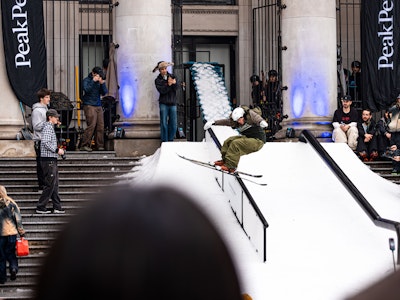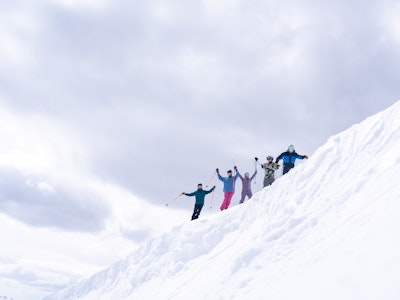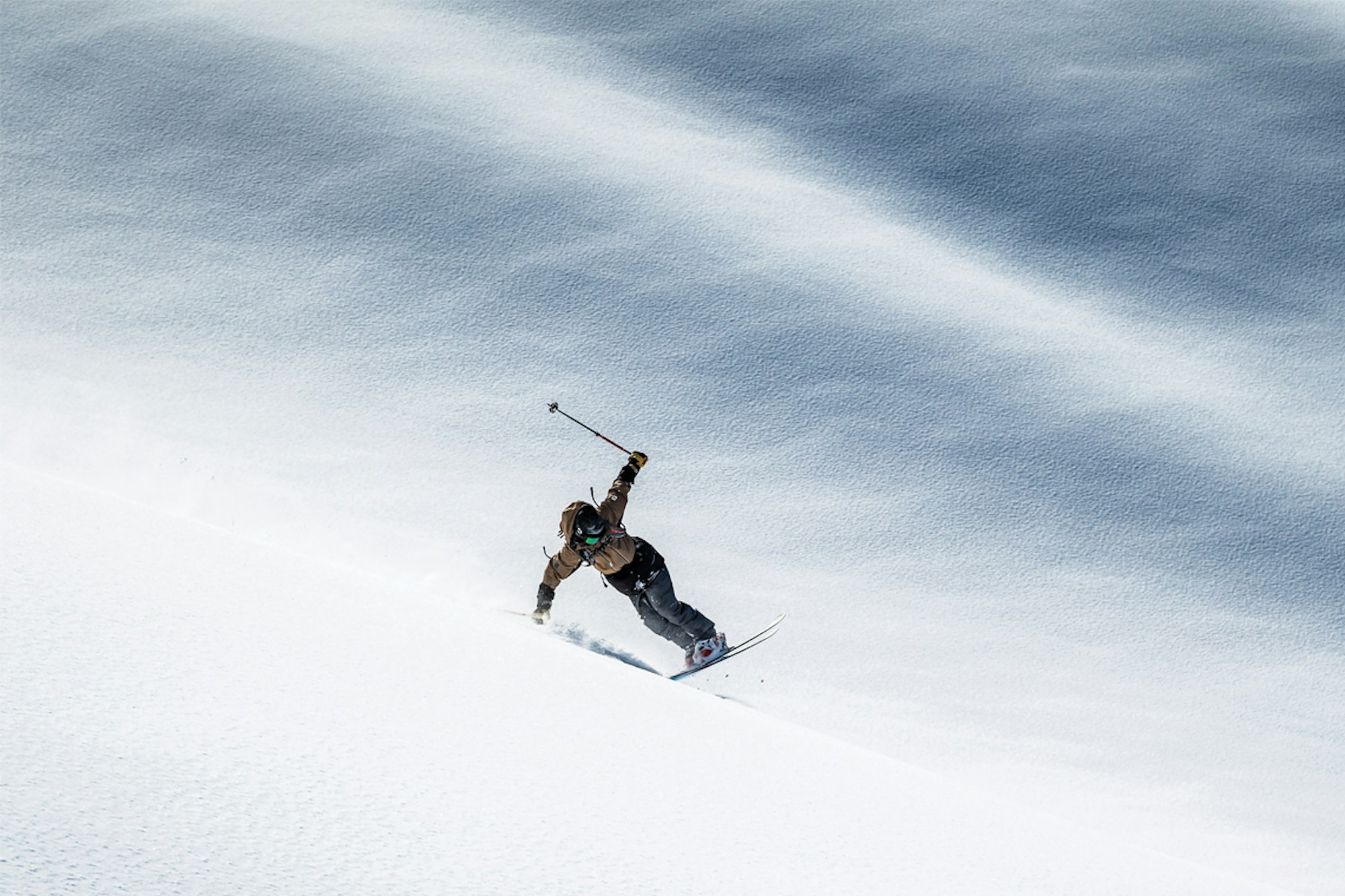Völkl’s Revolt 121 launches a new era of freestyle dedication
WORDS • TESS STROKES
SKIER • TANNER RAINVILLE | FEATURED IMAGE • PALLY LEARMOND | LOCATION • DAVOS, SUI
We’ll make a ski and involve the athletes,” says every ski brand marketing director ever. But how often are professional skiers truly dictating design from start to end?
Skiers Markus Eder, Colter Hinchliffe, Tanner Rainville, Ahmet Dadali, Paddy Graham, Fabio Studer, Sam Smoothy and Tom Ritsch had never been heavily involved in ski design before Völkl tapped into their knowledge, experience, inventiveness and creativity to help launch the Revolt 121. In the past, Völkl excelled at developing skis for big-mountain, directional charging and skis for jibbing, but it lacked something built for both. Two years ago, the athletes were tasked to create their ultimate playful powder ski that could charge big-mountain lines, stomp backcountry landings, maneuver the resort and float in the deep stuff.
“We don’t usually test skis,” says Eder, the 28-year-old reigning Freeride World Tour champion from Italy. “Prior to this, we would give some input before a ski was developed, and then we would receive the ski. But, the Built Together program changed the process completely. Now, we shape decisions every step of the way.”
Graham agrees: “We’ve tried skis before they came out, but never sat down with the product manager and engineer to draw a ski from scratch. And we’ve never spent so much time testing.”
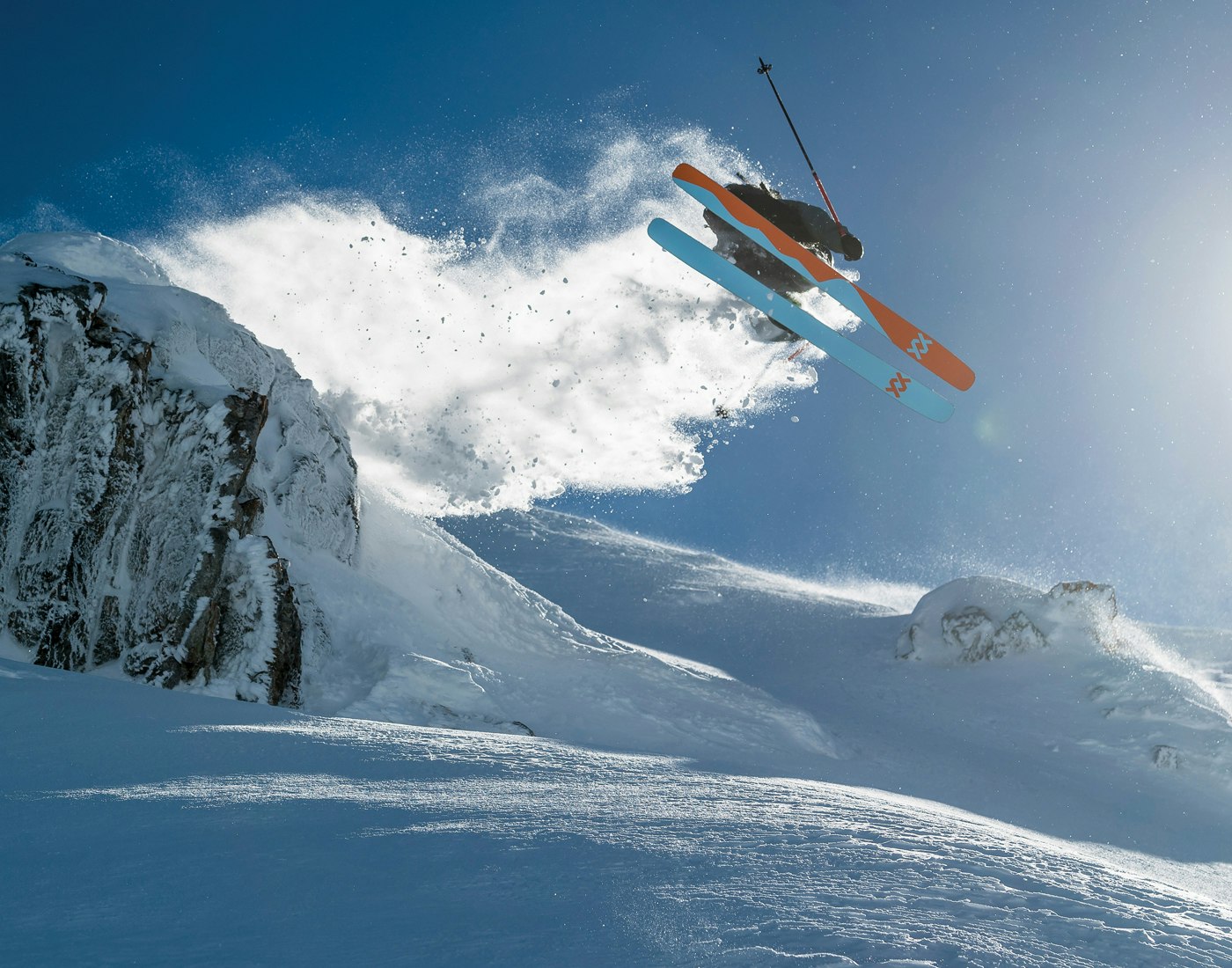
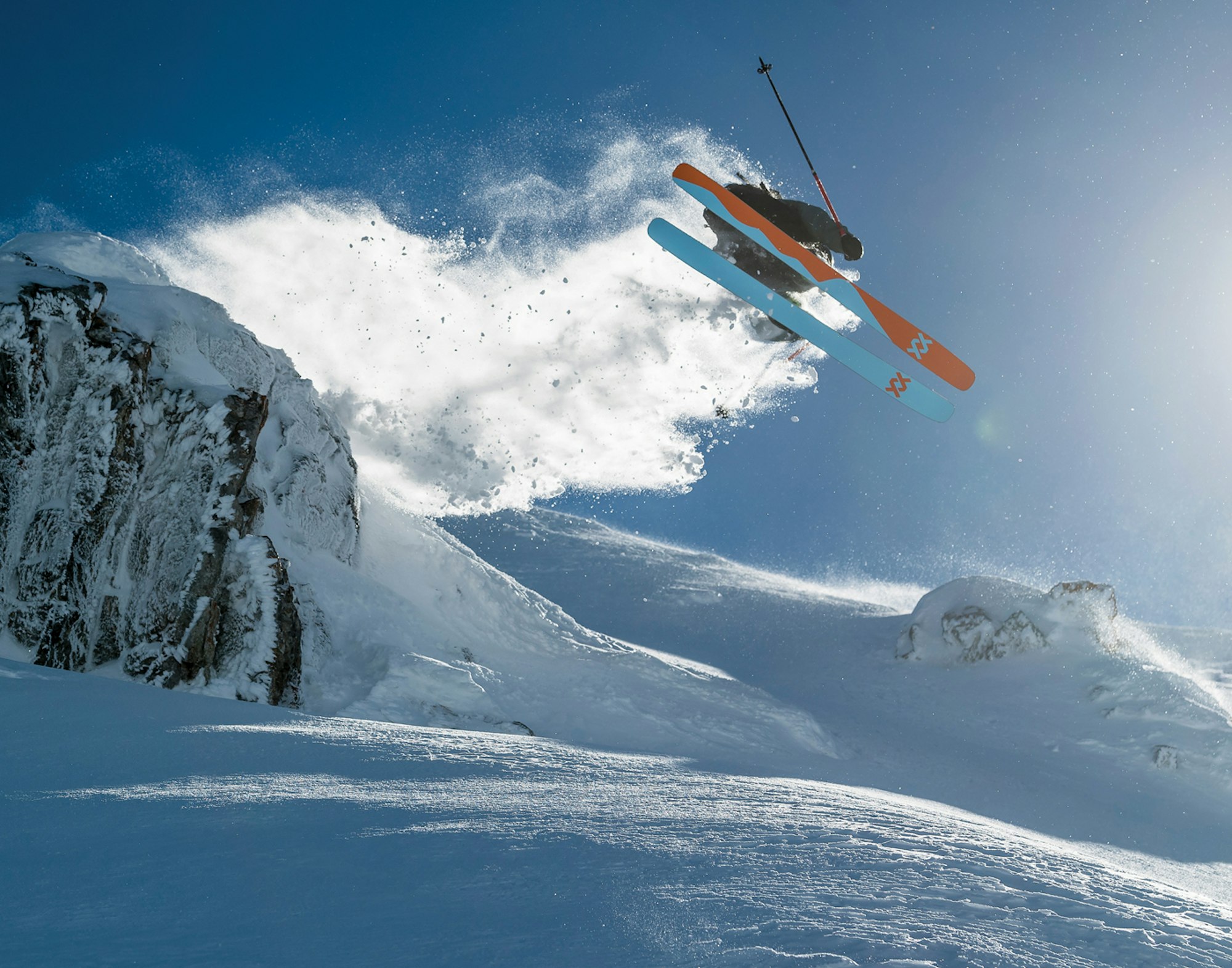
SKIER: Tom Ritsch | PHOTO: Pally Learmond | LOCATION: Davos, SUI
Völkl’s launch of the Revolt 121 this fall represented much more than a new ski hitting the market. The almost-100-year-old ski brand made it clear it values the freestyle segment enough to completely realign its approach to freestyle skis and overhaul its product development process. The ski unveiling included a release of the 20-minute film, 121, a Legs of Steel production featuring the athletes who created the ski. Völkl invited fans to host their own premieres and gave away Revolt 121s to the best hosts.
Völkl team manager Jean-Claude Pedrolini spearheaded the initiative that linked the aforementioned athletes with lead engineer Lucas Romain, a former French national slopestyle skier who personally tested each prototype iteration practically as hard as the athletes.
“We knew a ski like the 121 wouldn’t be our best-selling ski, but it would be the ski most of our athletes used for filming and a ski you would see everywhere on social media and through our athletes’ channels,” says Pedrolini. “Essentially, the ski was the best tool to generate some noise in the freeski scene and to tell the world that we are doing something new.”
From left to right, athletes Colter Hinchliffe and Lucas Romain testing out the Revolt 121 in Davos, Switzerland.
PHOTOS: Pally Learmond
The process began when the group gathered two years ago, and each skier brought their ideas and theories to the table. Eder wanted a ski that could charge big lines, hold its own in big-mountain competitions and land double cork variations. Dadali needed a maneuverable and playful ski that could float through deep snow switch. Hinchliffe wanted something lightweight enough that he could mount with Kingpins and take it on short tours, ski hard on the way down and land tricks off cliffs and jumps. Graham and Ritsch needed to land doubles and rodeos off backcountry booters. And the ski needed to accommodate Rainville’s fluid, stylish skiing.
The athletes took a crash course in ski engineering. The ski went through seven test rounds. The first session played with sidecuts. They looked at an old nose shape from a 20-year-old ski and tried it with rocker. The inverted tip didn’t work as well as expected. Neither did an idea inspired by a Sanuk 190 powder ski with a swallowtail. After skiing long days on a handful of different models and learning the ins and outs of ski testing, the group left with a cohesive vision and the prototype they wanted to improve upon. During the second session, Graham and Pedrolini skied powder, and looked for the sweet spot of the ski. The mounting point went from minus two to minus four. All along the way, Romain implemented the athletes’ feedback into new models for the next round of testing. Subsequent analysis determined rocker and tip and tail shapes. The final examination in Argentina in 2018 finalized rocker and flex.
Geoff Curtis, vice president of marketing at Marker Dalbello Völkl USA, credits the team effort with the final product. “It was having the right product manager behind the athletes, as well as the actual R&D person from the factory present for each test, an engineer who used to compete in slopestyle. We made the absolute best powder ski we could.”
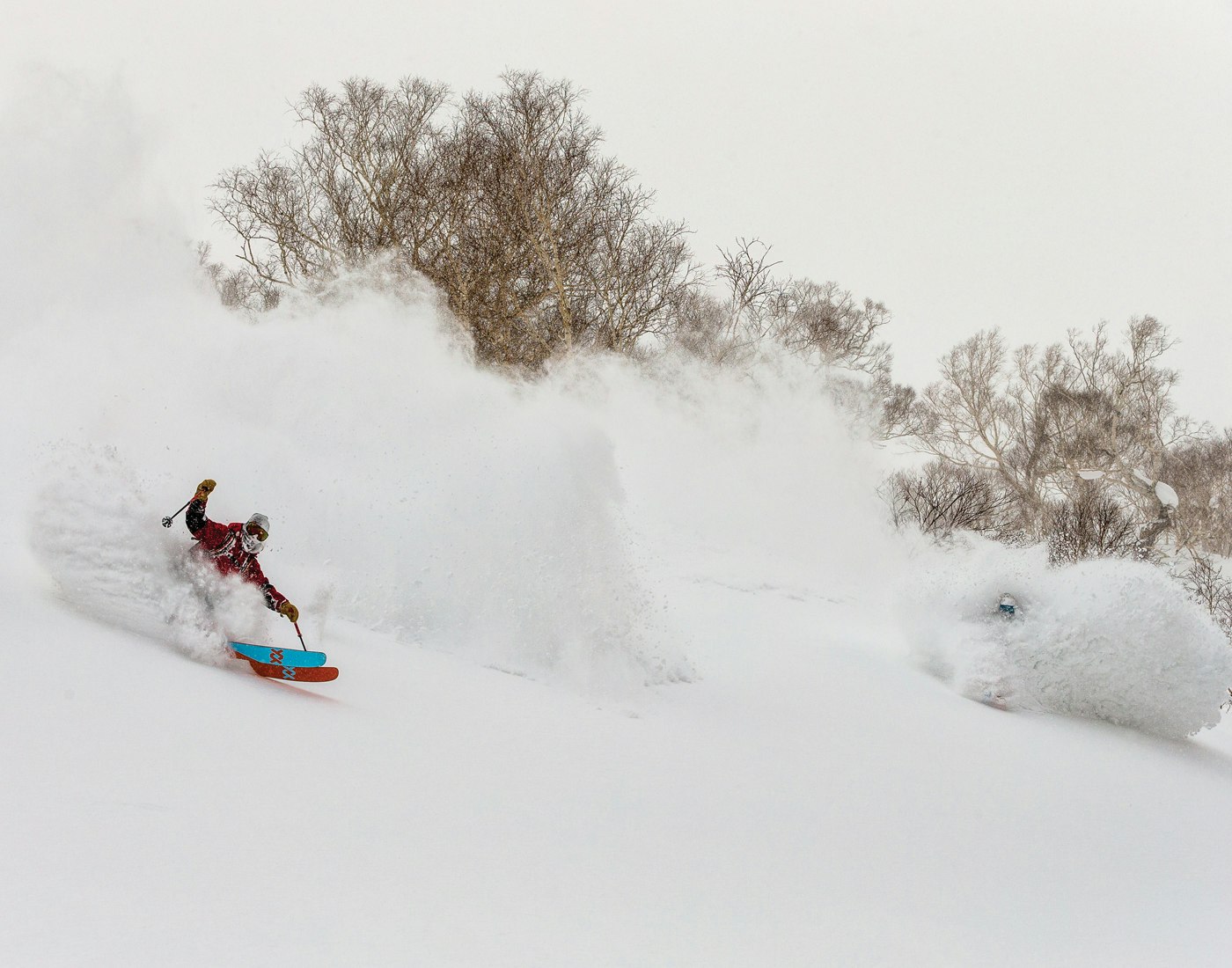
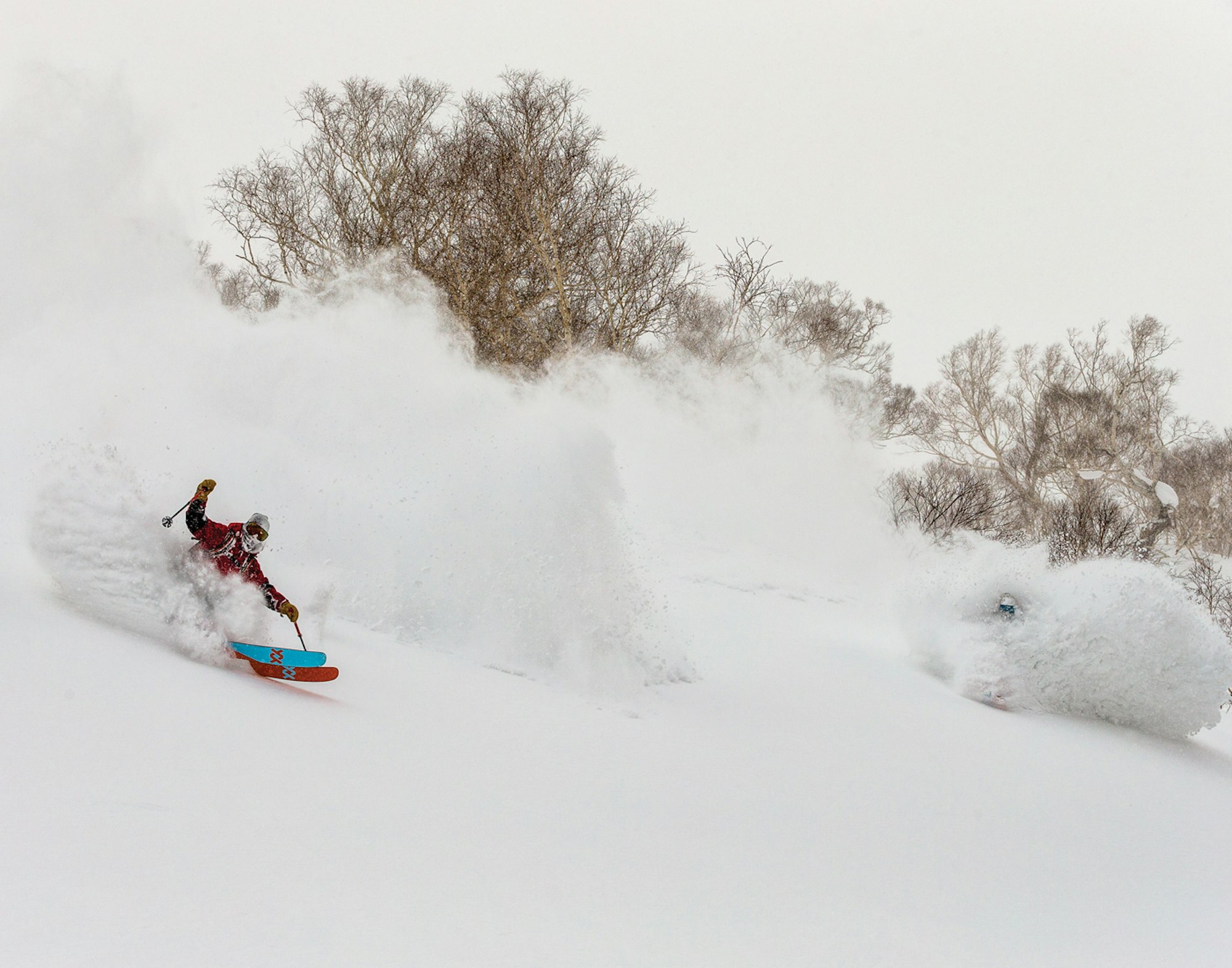
SKIERS: Tanner Rainville (left) and Ahmet Dadali (right) | PHOTO: Grant Gunderson | LOCATION: Hokkaido, JPN
Gear Spotlight


Völkl Revolt 121 – Buy Now
“The Revolt 121 was intentionally designed for throwing and stomping big tricks in deep powder conditions, whether inbounds or in the backcountry. Colter Hinchliffe, Tanner Rainville and Markus Eder all played a hand in its construction, and you can sense their handiwork when you step onto these planks. Significant tip and tail rocker keeps the Revolt 121 afloat and dramatic taper lines promote buttering and pressing. Camber underfoot sures-up stability and the thought-provoking graphic will have you pondering the correlation between powder skiing and the grander meanings of the universe.”
The end product features—you guessed it—a 121-millimeter waist. Near symmetrical tip and tail rocker dimensions allow skiers to press, pop, spin and butter through the deepest of the deep. Völkl’s new three-dimensional sidecut adds directional stability for charging lines, steeps and even groomers. “It’s an all-mountain versatility concept,” says Curtis. “The sidecut radius tightens as it gets closer to the mid-body of the ski, and with the Revolt 121, the tightest point is a little more forward than on an all-mountain ski. It’s positioned to allow really easy smearing and maneuverability, but it can adjust quickly from long to short radius turns. Rather than the ski telling the skier what size turns to make, the skier has total control and the ski is adaptable.”
“I told my friends—and I don’t bullshit them—that I think it’s the most fun ski out there,” says Eder. “I’m just so stoked with how it turned out. You can ski fast, send it and stomp hard, but you can also get playful with it. You can butter around and easily turn in the trees. The ski even made me fall back in love with carving on-piste.”
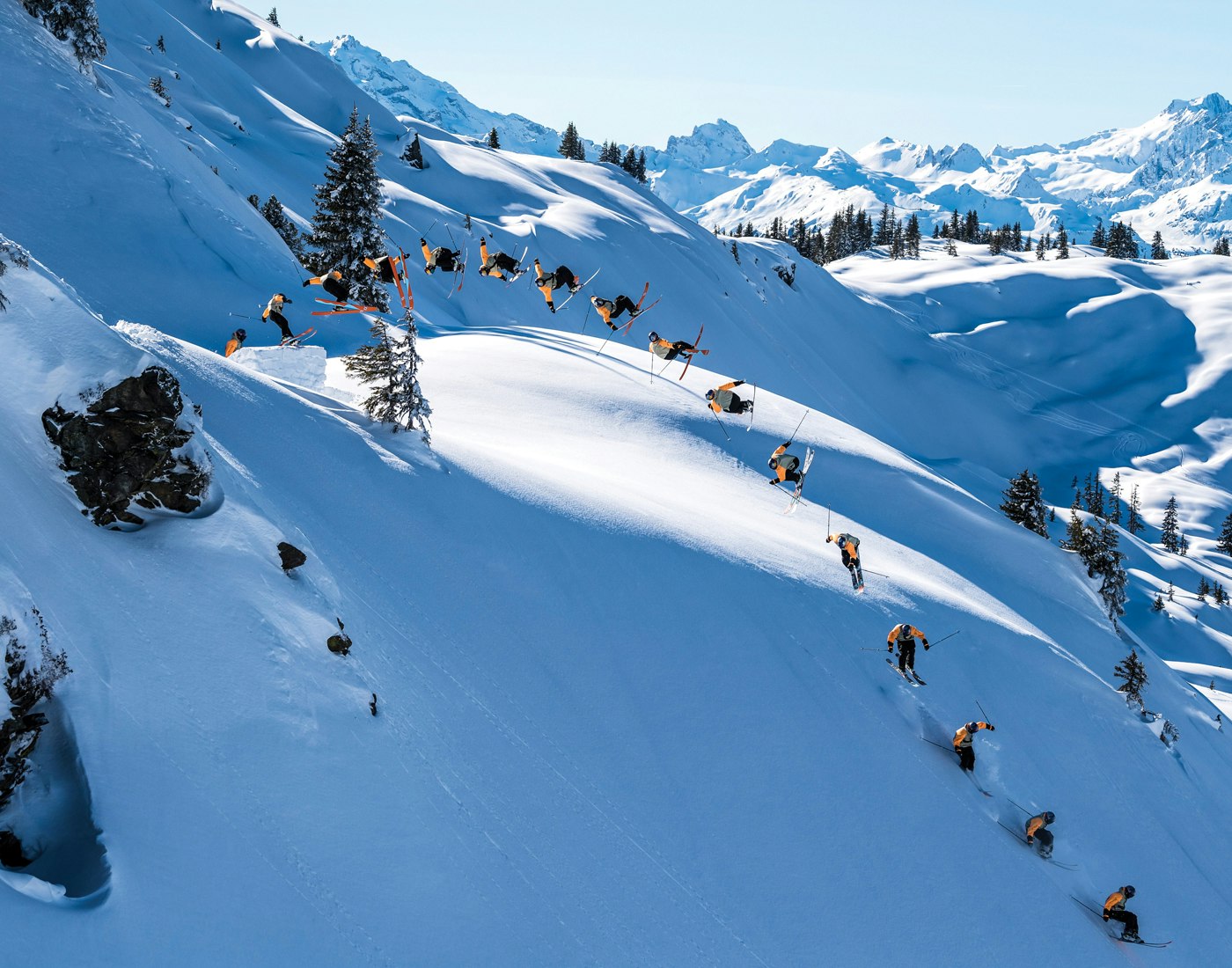
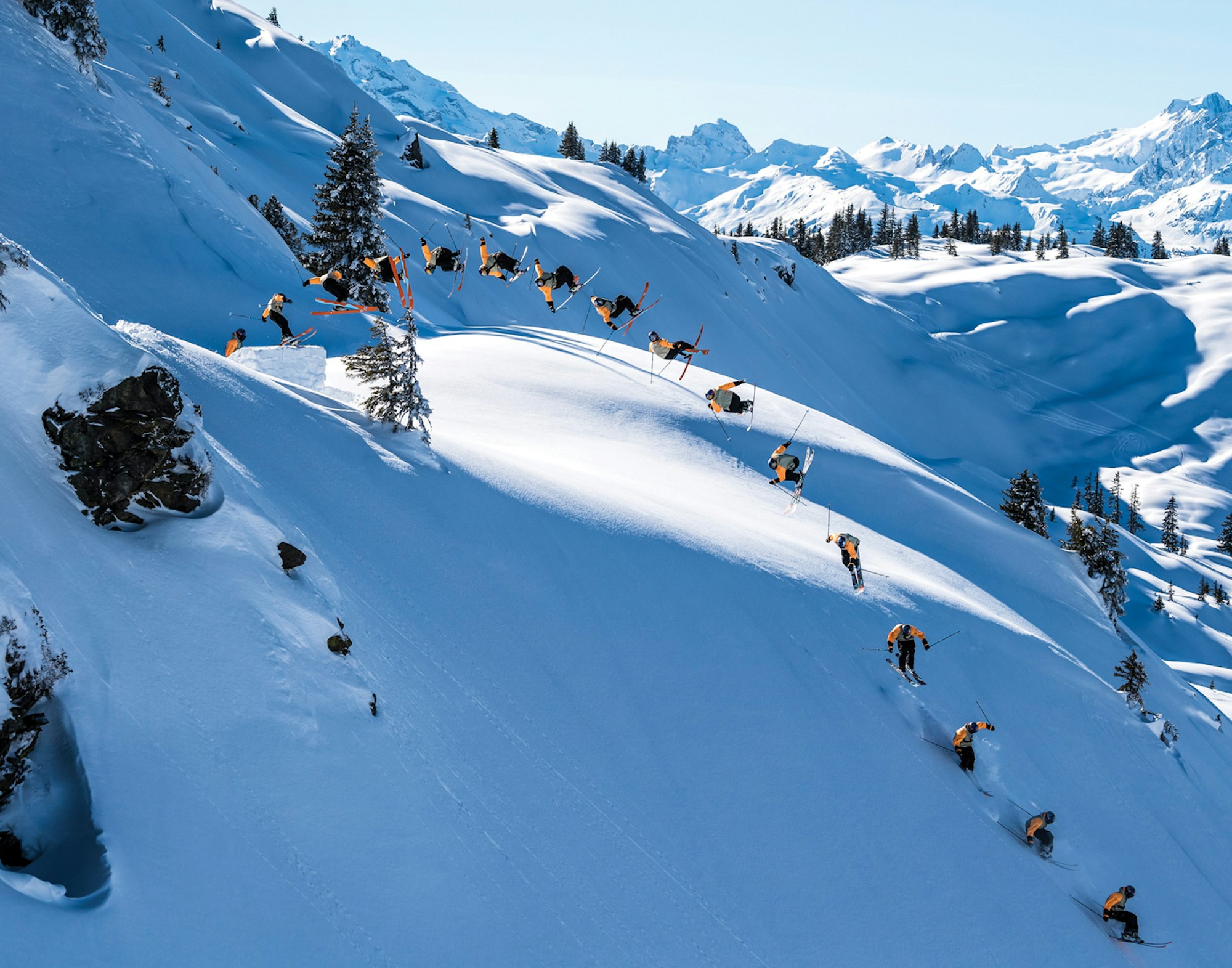
SKIER: Paddy Graham | PHOTO: Pally Learmond | LOCATION: Arlberg, AUT
“In the past, my tips have folded when I’m trying to land centered,” says Hinchliffe. “This tail is stiff, so you can land backseat and wheelie out, but it still has the flex to pop an ollie. Before this, all Völkl [powder] skis were reverse camber. It was cool for a while, but we all realized a little camber underfoot provides that pop.”
Let us not forget the artwork. New Zealand visual artist Ken Griffen, selected by the athletes from a pool of applicants, designed a topsheet featuring an illustration of what a brain looks like when it’s happy and filled with endorphins, laid atop a person’s face looking up at a mountain with excitement. It reflects the creative sensibilities of the group.
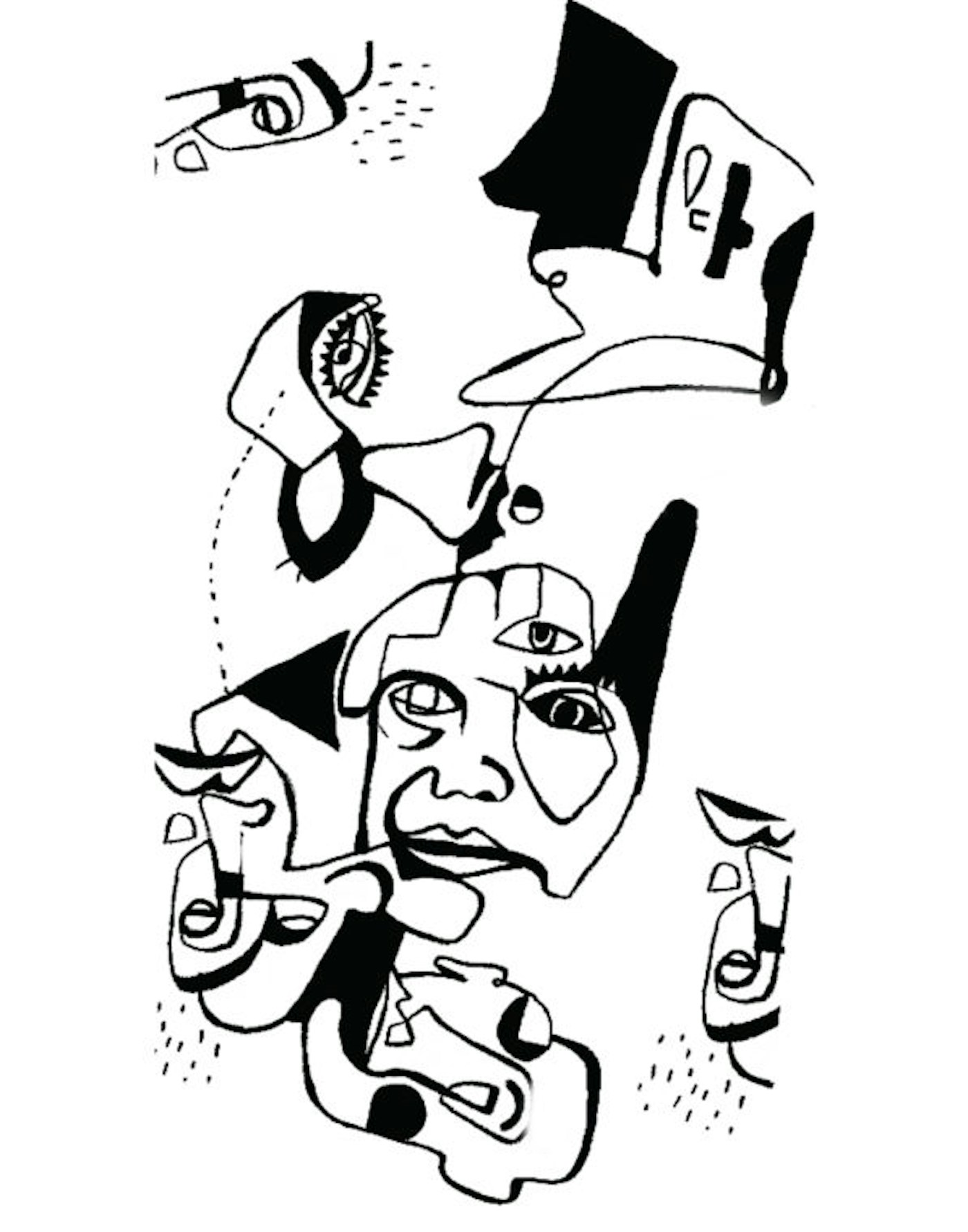
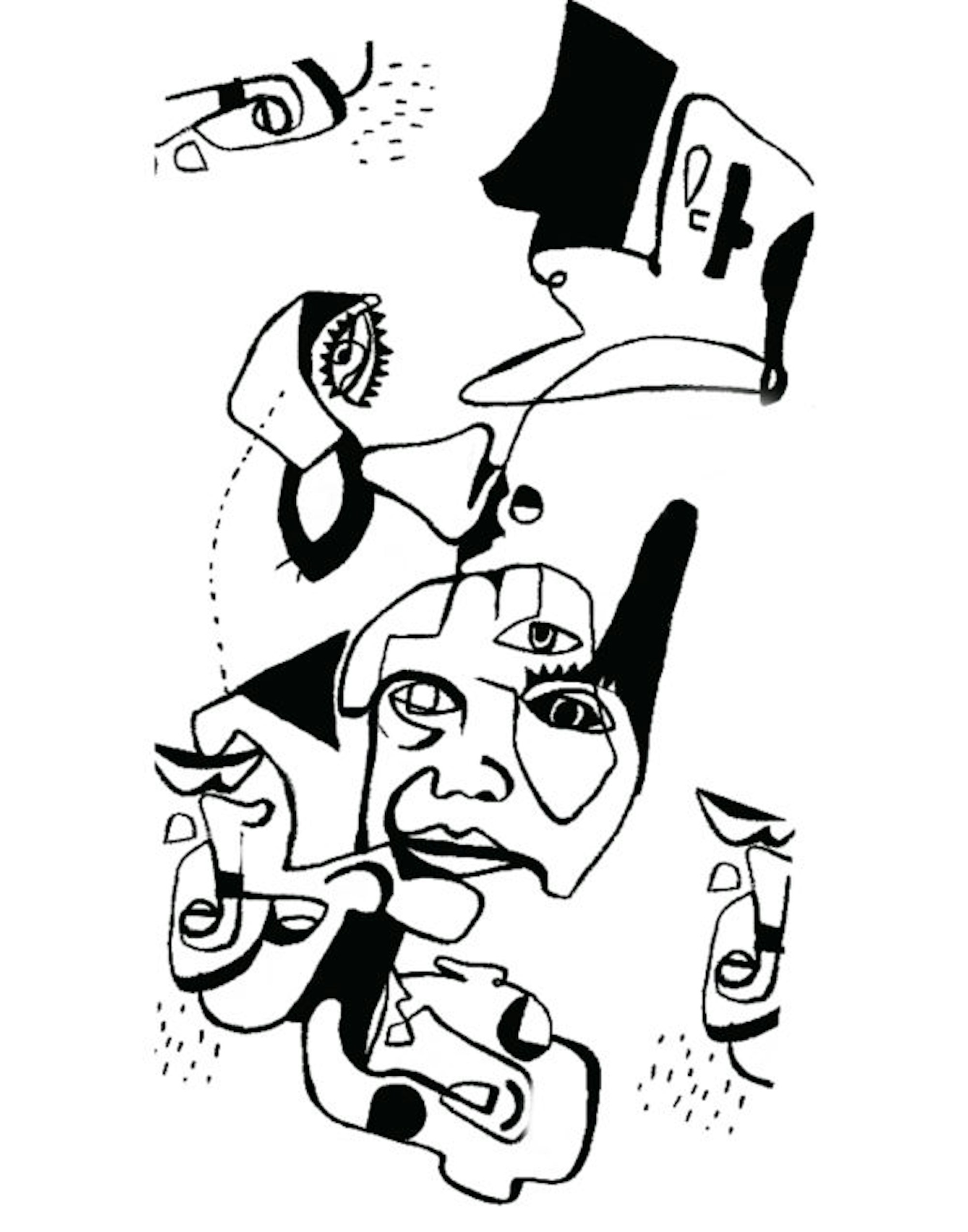
Artwork from Ken Griffen dons the topsheet of the Revolt 121, aimed to invoke the positive mental state brought on by the mountains.
The versatile ski promoted cross-genre shredding among the group. Hinchliffe and Ritsch fed off each other in Switzerland. “It’s so fun to ski with Tom,” says Hinchliffe. “He’s a really excellent tricker and it was great to learn from him.” Hinchliffe pushed Ritsch into some bigger lines and helped him progress during a jump session.
The film takes viewers to Japan, Switzerland and Austria, where the athletes charged steep lines, launched finely built jumps, smeared nose butter 3s and skied bottomless pow, all on the Revolt 121; the “Japow” was so deep, Dadali actually skied with poles. “The film is action-packed—no storyline,” says Hinchliffe, whose pillow skiing segment is a highlight of the film. “The skiing begins within 30 seconds and never stops. It also has an awesome crash reel in the end.” Tanner Rainville surfed spines in Switzerland, Ritsch and Graham laid down incredible backcountry tricks in Austria, Dadali brought his unique style to the depths of Japan and the whole team gathered in Verbier to watch Eder be crowned Freeride World Tour Champion. Legs of Steel, of which Graham is a co-founder, captured award-worthy footage of each and every trip. “Filming this process, we’ve grown into a stronger team,” says Pedrolini. “We will continue the filming element of our Built Together program. Next season, we will premiere the new Built Together ski, show how we built it and follow more athletes and other products.”
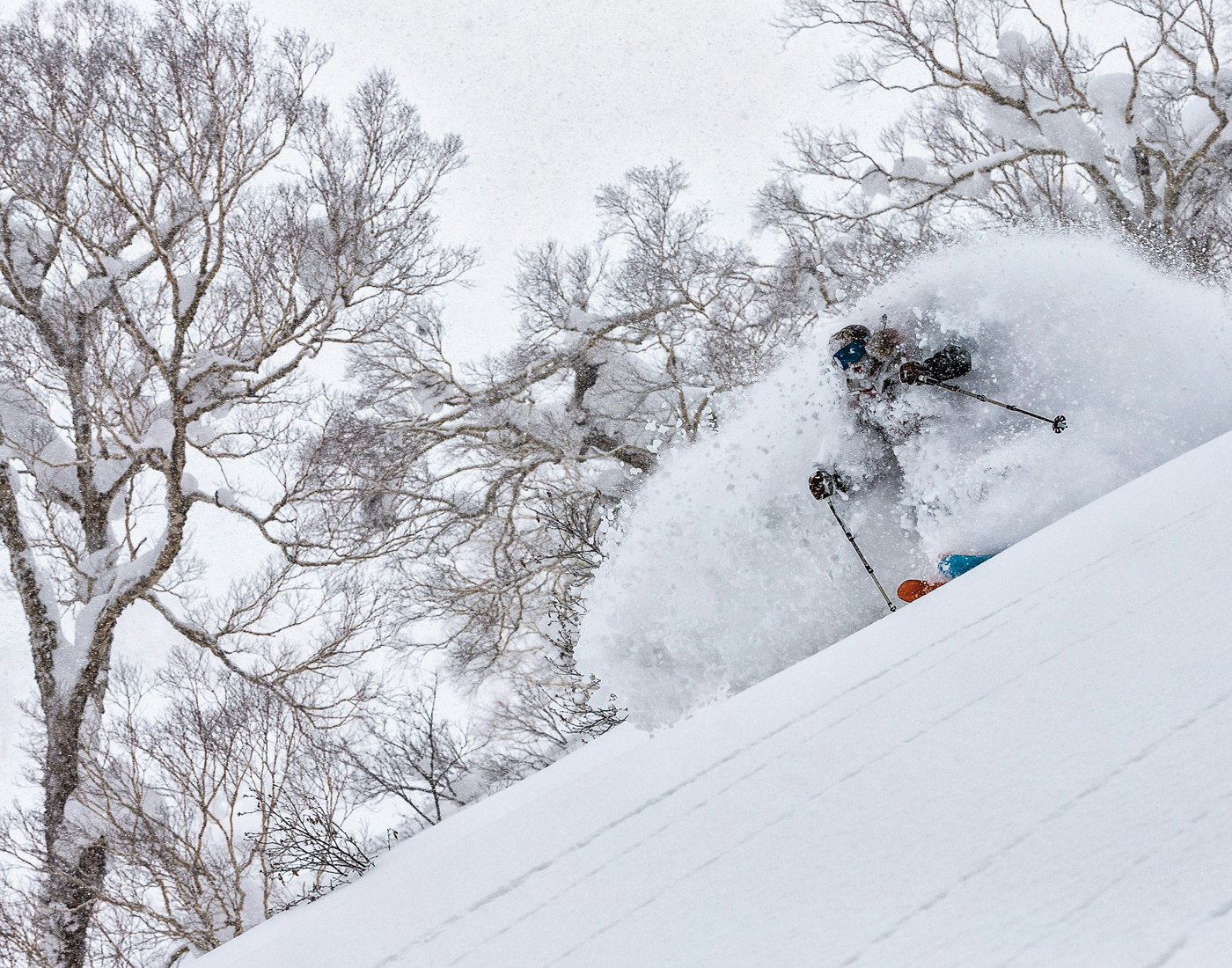
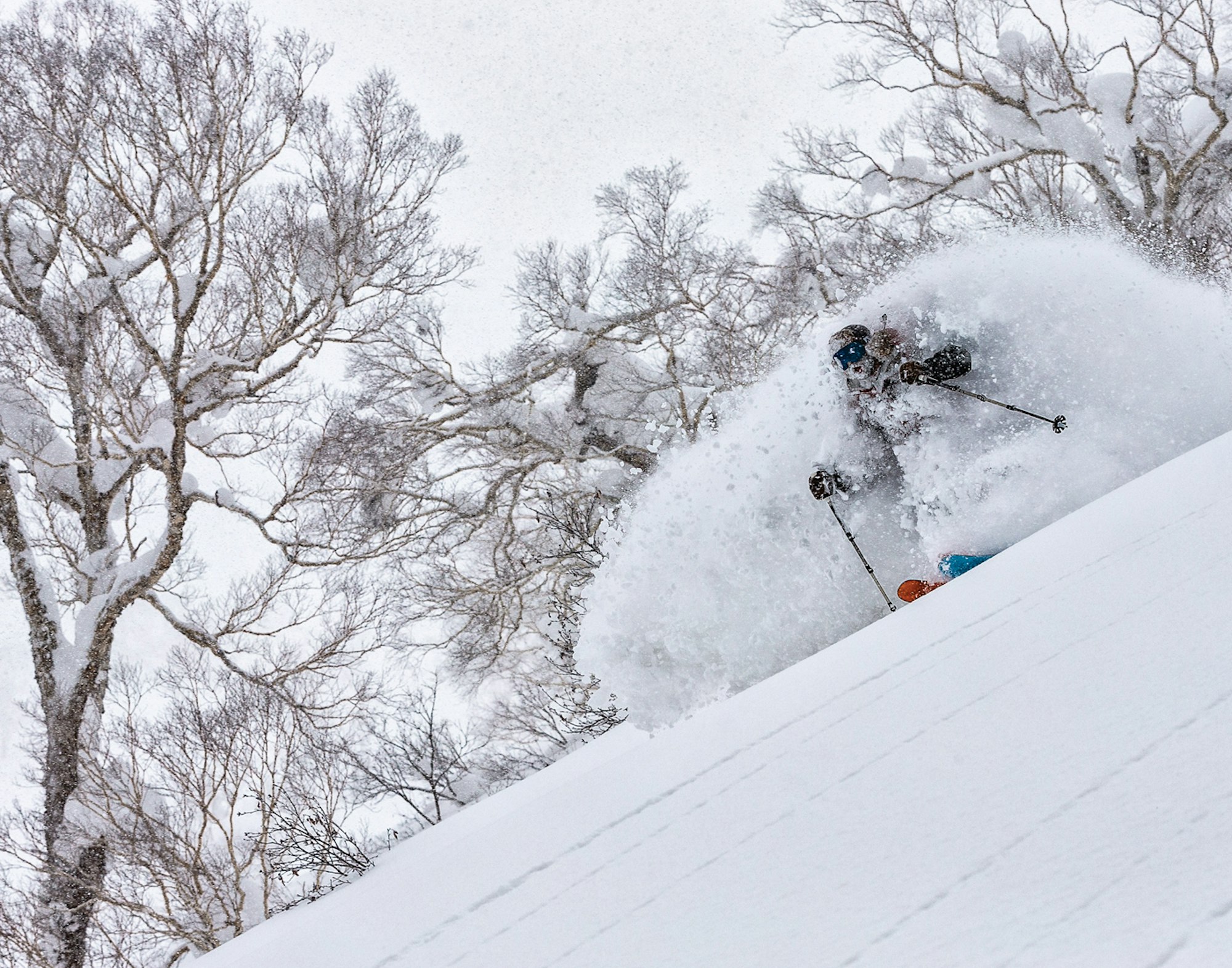
SKIER: Ahmet Dadali (note: poles) | PHOTO: Grant Gunderson | LOCATION: Kiroro, JPN
Völkl’s entire freestyle product family will go through four years of Built Together redesigns, with some models totally reworked from the ground up. For 2021-2022, Völkl’s “Built Together” ski is an all-mountain freestyle concept that will have inbounds tricksters rejoicing.
If the public feels even half the satisfaction skiing the Revolt 121 as the athletes, Völkl considers this ski a success. Offering athletes an opportunity to design their ultimate ski not only resulted in something that’s overhauling a company’s entire approach to freestyle, but also boosted team morale to sky-high levels. Hinchliffe sums it up: “Skiing every day you have a lot of ideas, and seeing some of them come to life is an athlete’s dream.”


This story originally appeared in FREESKIER 22.3, The Backcountry Issue.

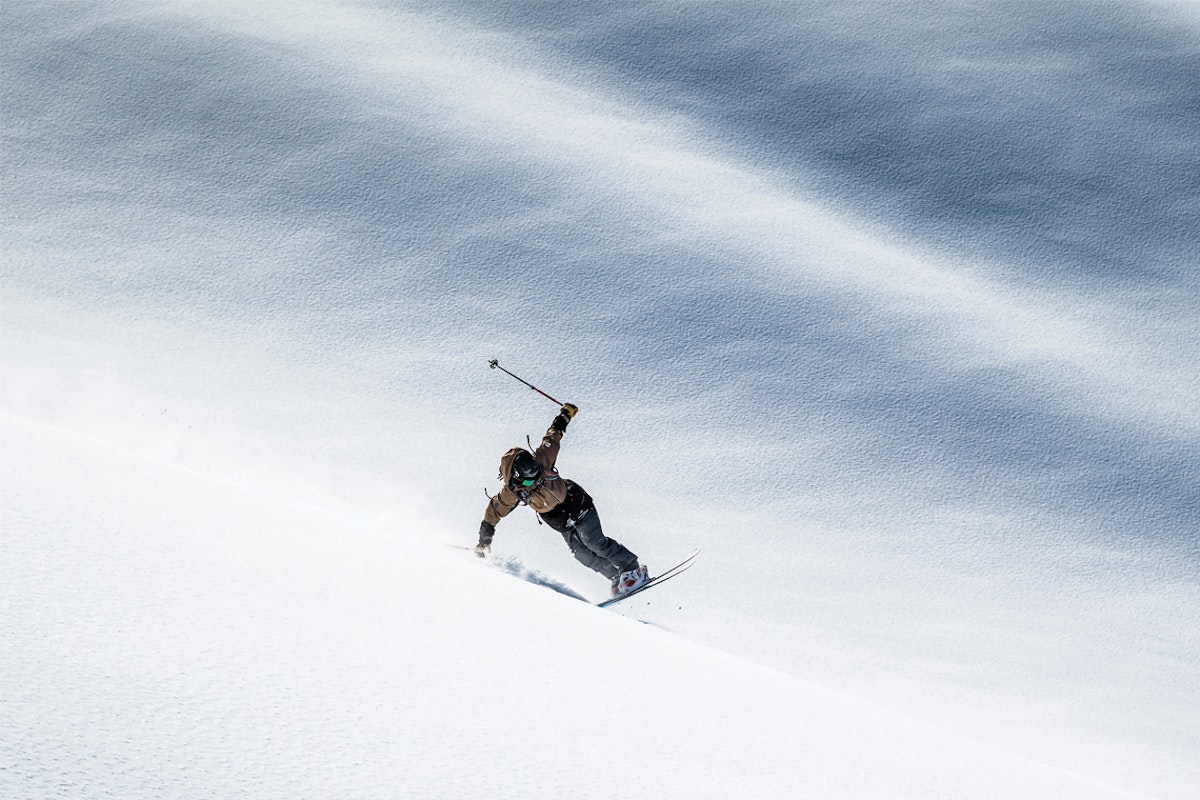
![[GIVEAWAY] Win a Legendary Ski Trip with Icelantic's Road to the Rocks](https://www.datocms-assets.com/163516/1765233064-r2r26_freeskier_leaderboard1.jpg?w=200&h=200&fit=crop)
![[GIVEAWAY] Win a Head-to-Toe Ski Setup from IFSA](https://www.datocms-assets.com/163516/1765920344-ifsa.jpg?w=200&h=200&fit=crop)


![[GIVEAWAY] Win a Legendary Ski Trip with Icelantic's Road to the Rocks](https://www.datocms-assets.com/163516/1765233064-r2r26_freeskier_leaderboard1.jpg?auto=format&w=400&h=300&fit=crop&crop=faces,entropy)


![[GIVEAWAY] Win a Head-to-Toe Ski Setup from IFSA](https://www.datocms-assets.com/163516/1765920344-ifsa.jpg?auto=format&w=400&h=300&fit=crop&crop=faces,entropy)


